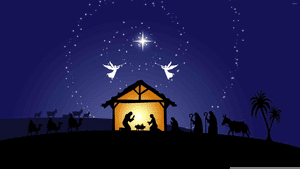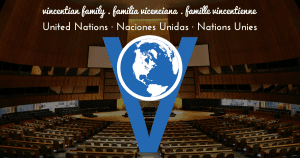 As we approach the feast of Christmas, our thoughts focus on a night over 2000 years ago in Bethlehem that changed the world. As I prepare for this feast, I cannot help but imagine how similar that night may have been to a homeless family’s experience today. The Holy Family’s story is like the story of many poor homeless families who will seek shelter around the globe this Christmas night. This Christmas story illustrates the challenges for women who experience homelessness.
As we approach the feast of Christmas, our thoughts focus on a night over 2000 years ago in Bethlehem that changed the world. As I prepare for this feast, I cannot help but imagine how similar that night may have been to a homeless family’s experience today. The Holy Family’s story is like the story of many poor homeless families who will seek shelter around the globe this Christmas night. This Christmas story illustrates the challenges for women who experience homelessness.
Mary traveled a long way to Bethlehem in her ninth month of pregnancy. When appropriate accommodations could not be found, she and Joseph took shelter in a stable. There, she gave birth to Jesus. If we focus on the experience of the Holy Family we see some of the unique problems that face women and their children along with the uncertainty, struggle and stigma that face the entire homeless community.
UN Habitat tells us that over 150 million people are estimated to be homeless worldwide. Women are estimated to be between 25-35% of people who are homeless. Children comprise another 30%. Statistics project that women and families are the fastest growing segment of the homeless population.
Mary’s difficult travel late in pregnancy would not be approved by any medical professional. She risked injury to herself and her child when she was forced to travel to Bethlehem on a donkey. Giving birth in a stable which lacked potable water or sanitary conditions is often the case for people living in slums, temporary shelters or street sleepers. It highlights the need for maternal health care. That care is expensive and not very accessible to homeless mothers. When it is available, fear of losing their child to protection agencies is often equal to the fear of losing their child illness or to kidnappers. Even if a woman is not pregnant, she must manage menstruation without access to sanitary necessities.
Risk of violence is heightened for women who are homeless and it is ironic because domestic violence and civil unrest are two drivers of homelessness for women. While Mary had Joseph for companionship and protection, it is estimated that 85% of homeless families are headed by single women.
Homelessness is more complex when children are part of the unit. Childcare affects both the solutions needed as well as the capacity to earn income for rent. Gender inequality in jobs makes escaping homelessness more difficult and couple that with the fact that homeless women are more likely to lack education and job skills. We are learning that with climate related forced migration, women bear the burden of displacement with caregiving responsibilities of both children and elderly and often lack skills that can be used in a new environment.
For 21st century homeless families and for the Holy Family, the hymn “Silent Night” would not resonate with their experience. A city street, a temporary shelter, the woods, an automobile or a stable with animals offers limited shelter and certainly no calm, no brightness, no silence, little sleep and no peace.
The Vincentian Family is committed to changing this reality by ending global homelessness. Join us with your prayers and by learning more about the Working Group to End Homelessness at the United Nations. Christmas Blessings.








Thank you, Mary Ann, for a most timely and moving piece.